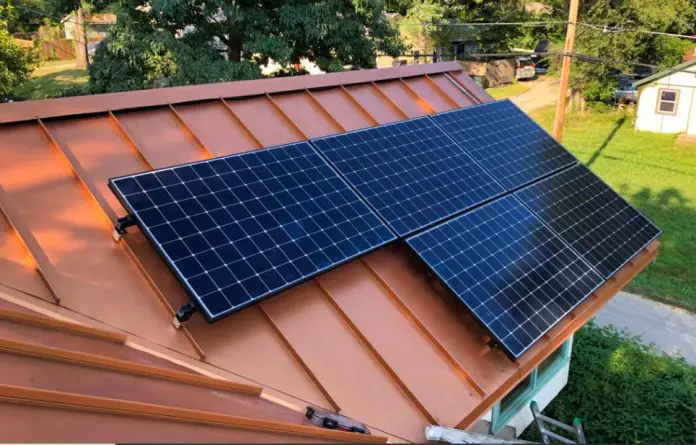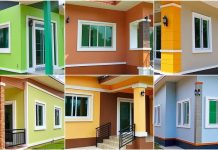Looking to decrease your energy costs alongside making a positive environmental impact? You may have considered the use of solar energy for electricity in your home. Solar panel efficiency is the percentage of sunlight that a solar panel can convert into electricity.
More homeowners now choose solar panels to decrease their carbon footprint while also saving money. Solar panel options vary greatly so understanding efficiency remains essential when selecting panels for your home.
The truth is…
The majority of homeowners lack complete knowledge about solar panel efficiency and its effect on energy production and financial savings. Without adequate knowledge of solar panel efficiency, homeowners may face underwhelming performance and unnecessary expenses for technology that exceeds their needs.
It’s time to explore each essential detail about solar panel efficiency that matters to you as a homeowner.
The Inside Scoop:
- What Is Solar Panel Efficiency?
- Factors That Affect Solar Panel Efficiency
- Different solar panel types exhibit varying efficiency ratings.
- Maximizing Your Solar Panel Efficiency
- Cost vs. Efficiency: Finding the Sweet Spot
What Is Solar Panel Efficiency?
Solar panel efficiency represents the proportion of sunlight hitting the panel that transforms into electricity. A solar panel with a higher efficiency rating generates more electricity from the same sunlight exposure.
Think of it this way…
A 20% efficient solar panel transforms 20% of incoming sunlight into electrical energy. The unconverted sunlight either bounces off the panel or turns into heat. A solar panel efficiency rate of 20% stands as a strong performance benchmark in the current market.
Solar panels for homes typically fall within a 15% to 23% efficiency range. Solar panels with top-tier performance achieve up to 23% efficiency but require a higher purchase cost. Rapid advancements in solar technology reveal that perovskite tandem cell research indicates potential efficiency improvements beyond the 20-23% average for traditional solar modules through recent scalable cell breakthroughs achieving up to 28.6% efficiency.
Theoretically, the fundamental formula for calculating solar panel efficiency is:
- Efficiency (%) = (Panel Power Output / Panel Surface Area / Sunlight Irradiance) x 100%
Where:
Panel Power Output = This is the electrical power produced by the solar panel, typically measured in watts (W).
Panel Surface Area = This is the total area of the solar panel, measured in square meters (m²).
Sunlight Irradiance = This is the amount of sunlight power that falls on the paneExample:
- Let’s say you have a solar panel with a power output of 350 W and dimensions of 1.7 m x 1 m.
- Surface area = 1.7 m x 1 m = 1.7 m²
- Efficiency = (350 W / 1.7 m² / 1000 W/m²) x 100% = 20.58%
Important Considerations:
Solar panel efficiency is typically measured under STC, which include:
- Sunlight irradiance of 1000 W/m²
- Panel temperature of 25°C
- Air mass of 1.5
Real-world conditions can vary significantly, affecting actual efficiency.
Why does this matter for your home? An affordable Delaware home solar company can help you determine exactly what efficiency rating makes sense for your specific situation, considering your energy needs, roof space, and budget. Optimal solar panel value does not solely depend on efficiency but rather on achieving the correct balance for your home’s energy requirements and goals.

Factors That Affect Solar Panel Efficiency
The performance efficiency of your solar panels depends on several vital elements.
- Panel Technology: The efficiency levels of solar panels vary based on the manufacturing methods and materials used. Monocrystalline solar panels deliver top efficiency ratings, although polycrystalline and thin-film panels provide lower efficiency at a reduced cost.
- Panel Temperature: Solar panel performance improves when it maintains a lower temperature. Panel efficiency decreases by 0.3-0.5% for each degree that the temperature rises above 77°F (25°C).
- Panel Orientation and Tilt: Solar panels positioned to face true south in the northern hemisphere will obtain maximum sunlight exposure during the day when set at the appropriate angle based on your specific latitude.
- Shading: One shaded panel can create enough disruption to lower the total power output from the whole string of solar panels.
Here’s something most homeowners don’t realize…
Real-world conditions often result in lower efficiency levels than those advertised on the spec sheet. Factors such as partial shading alongside dust accumulation, and temperature changes result in real-world energy output that falls below the rated efficiency levels.
Types of Solar Panels and Their Efficiency Ratings
Not all solar panels are created equal. Here is an overview of the primary solar panel types alongside their standard efficiency percentages:
Monocrystalline Panels (19-23% Efficient)
- Made from single-crystal silicon
- Highest efficiency ratings
- Sleek black appearance
- More expensive
Polycrystalline Panels (15-17% Efficient)
- Made from multiple silicon fragments melted together
- Bluish appearance
- Less expensive than monocrystalline
- Good middle-ground option
Thin-Film Panels (10-13% Efficient)
- Manufacturers create this technology by applying photovoltaic material in thin layers upon a base structure.
- Flexible and lightweight
- These panels need a larger area to produce equivalent amounts of electricity.
The U.S. will add 26 gigawatts (GW) of solar capacity to the electric power sector in 2025 and another 22 GW in 2026 after reaching a record 37 GW in 2024 while solar technology advances and prices decline. The renewable power generation sector in the U.S. will grow by 12% to reach 1,058 billion kWh in 2025.
Maximizing Your Solar Panel Efficiency
How can you ensure your residential solar energy solution delivers peak performance? These methods have been demonstrated to increase your system’s operational efficiency.
- Choose the Right Panel Type for Your Situation: Homeowners with restricted roof areas should consider investing in higher-efficiency panels despite their higher price.
- Proper Installation Matters: Panel installation requires precise angle and orientation adjustments to match your specific location.
- Keep Them Clean: Regular cleaning can improve output by 3-5%.
- Minimize Shading: Clear the area around your solar panels by trimming nearby trees and eliminating any objects that create shadows on the panels.
- Consider Microinverters or Power Optimizers: Microinverters and power optimizers help reduce the negative effects of shading on individual panels so it doesn’t compromise whole system performance.
Few installers share this critical information with customers…
Panels with slightly lower efficiency ratings can achieve better performance when installed in perfect conditions than higher-efficiency panels operating under poor conditions. Choose an experienced installer who evaluates your situation honestly instead of pushing the most expensive panels.
Cost vs. Efficiency: Finding the Sweet Spot
This is the big question for most homeowners: Does investing in more efficient panels provide a worthwhile return on investment?
The answer depends on several factors:
- Available Space: Limited roof space allows you to generate more power with higher-efficiency panels in the same area.
- Local Electricity Rates: Homeowners in regions with expensive electricity rates can often justify the higher costs of high-efficiency panels through their increased power output.
- Local Incentives: Rebate programs that depend on system size or power output can turn higher-efficiency systems into more economical options.
- Long-Term Plans: The extended energy production of your solar system throughout many years will repay its greater upfront cost when you stay in your house for decades.
Here’s the bottom line…
Homeowners currently find mid-range efficiency solar panels with 19-20% efficiency deliver optimal cost-performance balance. The domestic clean energy manufacturing industry expansion, along with significant U.S.-based solar component investments may lead to higher efficiency solar options becoming more affordable.
Wrapping It All Up
The process of learning about solar panel efficiency remains straightforward. Remember these key points:
- Solar panels with better efficiency produce more power while occupying minimal space.
- Real-world conditions affect actual performance
- Your home requires specific efficiency levels based on your unique circumstances.
- Both upfront costs and long-term production matter
Advances in solar technology continue to increase panel efficiency at a fast pace each year. Rapid market expansion makes this an optimal moment to evaluate solar energy solutions for your home.
Learning about solar panel efficiency helps you make better choices and steer clear of frequent mistakes when purchasing solar equipment. If you prioritize production maximization, cost reduction, or a balanced approach you can easily find an ideal solar solution for your home.










